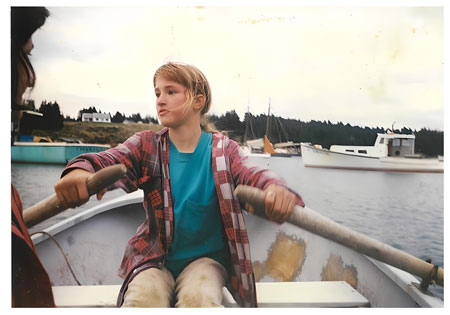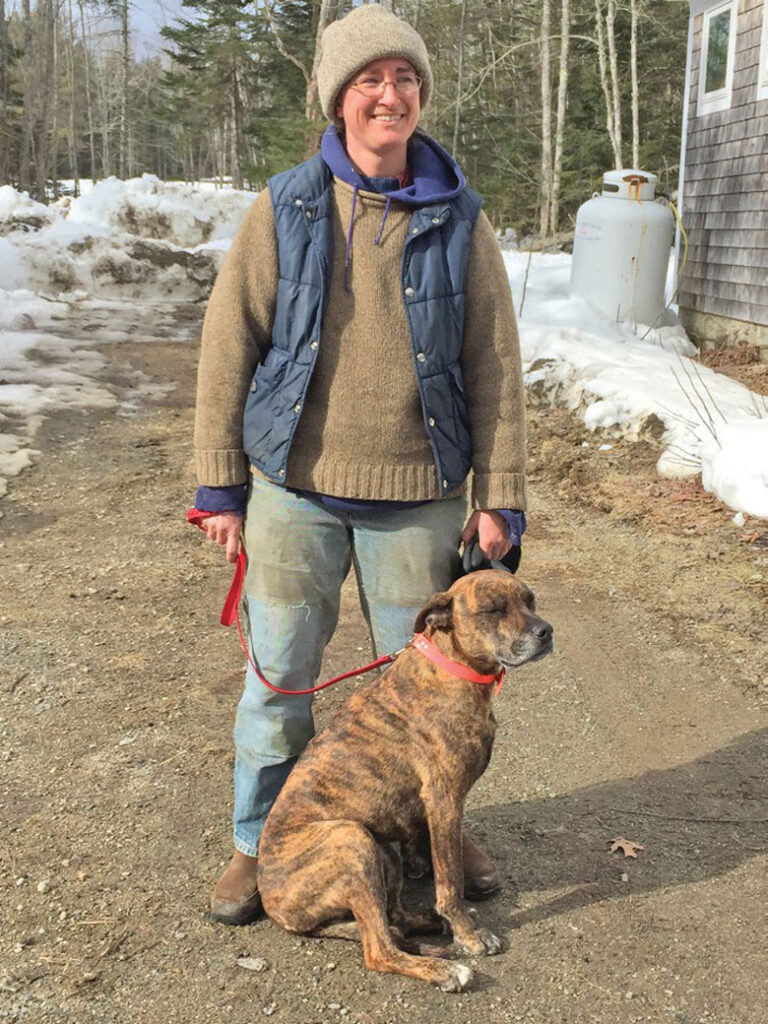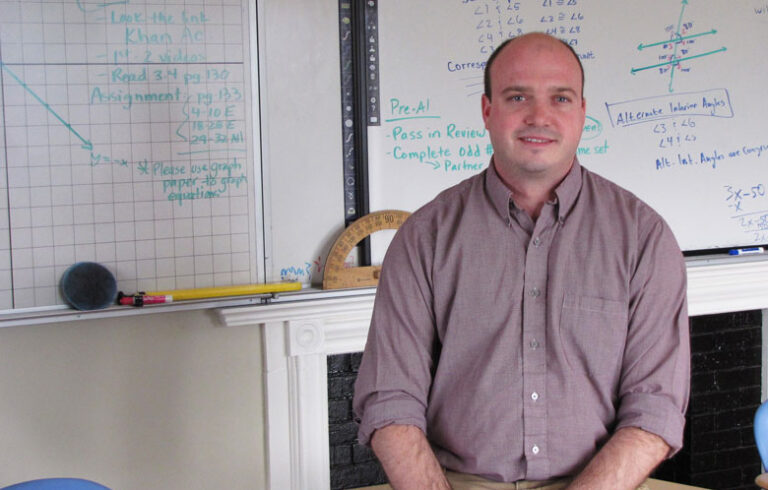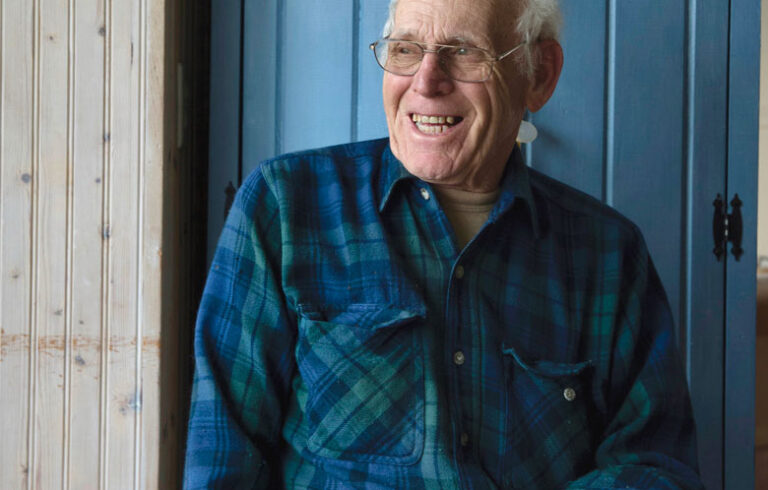Kipp Quinby’s new job is a sort of homecoming. In September, she took over as the teacher of Isle au Haut’s one-room school house, the same room where she attended school as a child.
In fact, all of Isle au Haut’s children have attended the same wooden schoolhouse, ringing the same outdoor bell from a rope inside the classroom for at least 100 years. The school serves students ranging from Pre-K to 8th grade. Last year’s student population was two, but this year it has more than tripled, to seven students.
“We were playing the game octopus [tag] today and there were just about enough of us to make that happen,” said Quinby.
“She is very supportive, and she wants me to do a good job, and I want her to be proud of me.”
Quinby is well-prepared to teach children on an island. As a young girl, she lived with her family on Peaks Island, where she received her first commercial lobstering license at the age of six, later working as a teenage sternman. Quinby’s family relocated to Isle au Haut when she was a child, as part of the island’s affordable housing program, which offers below-market-rate rentals to families wishing to establish themselves on the island.
“My Dad saw an ad for the housing program, and he asked my mother if she would divorce him if he wrote for more information,” Quinby said, laughing. “She said no, and he said, ‘You should see its harbor!’”
In addition to the island’s exceptional harbor, almost half of Isle au Haut is part of Acadia National Park and a favorite summer attraction for campers and hikers. Quinby, her parents, brother, and sister made the move and became part of Isle au Haut’s year-round population, which rises and falls, but averages around 50 residents.
One of those residents, Lisa Turner, is now in her 30th year as the Isle au Haut teacher’s aide. Like Quinby, Turner attended school there, and as far as anyone can tell, this is the first time two Isle au Haut graduates are working together to run the school.

Before applying for her teaching position, Quinby reached out to Turner, who served as a teacher’s aide when Quinby was a student.
“She said, ‘I think we’d work pretty well together,’ which is what I thought, too,” recalls Quinby. “She is very supportive, and she wants me to do a good job, and I want her to be proud of me.”
After graduating from the little white and green schoolhouse in 8th grade, Quinby’s high school education came in forms as unique as the island.
“We had a retired bishop on the island who taught me Latin and literature, and we had a carpenter who did boat design as lessons in geometry,” she said.
“We are so lucky with the folks we have out here. It was also the early stages of a University of Maine distance education program.”
Quinby attended her senior year in Finland as an exchange student before returning to Maine and attending the College of the Atlantic (COA), in part with a scholarship from Island Institute.
“COA offers one major: Human Ecology,” said Quinby. “It’s a flexible curriculum, so I received the equivalent of a degree in marine ecology and teaching.”
It’s difficult to imagine two degrees better suited to Quinby’s professional life, on and alongside the ocean. Today, she’s the owner of Island Girl Oysters, a sea farm located in the Blue Hill Salt Pond, where Quinby, with help from her sister, raises oysters. And for the past 12 years, she’s worked full-time in her family business, Ocean Resources.
“We collect and prepare marine specimens for schools and labs, so we do a lot of things prepared in formaldehyde and offer system coloring, where we might inject the arterial system one color and the venous system another,” said Quinby.
Speaking of the benefits to be found in a one-room schoolhouse, and also in a small island community, Quinby says the intermingling of generations is a gift.
“In the classroom, there’s a lot of modeling that happens, and learning to be responsible for folks who are younger than you. It’s a valuable skill and it’s served me really well,” Quinby said.
“Living on an island, where there are fewer options, I think it opens us up to realizing that potential friends and partners in different projects don’t exist in a single age bracket,” she said. “We can have friends of all ages, from just starting to do things, up into the 80s.”





